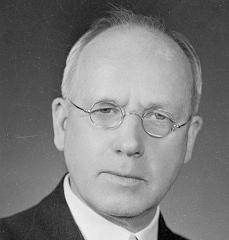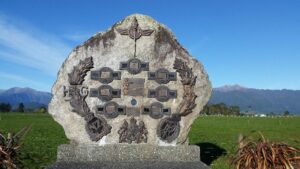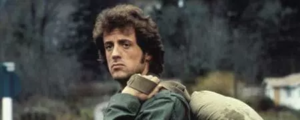1941: The Graham Manhunt
October 7, 2021
By AHNZ
 Today in history, 8 October, 1941, 80 years ago as I write, New Zealand’s greatest manhunt began. Stanley Graham was confronted in his farm house that morning by 4 armed police seeking to disarm him. All four were soon shot dead.
Today in history, 8 October, 1941, 80 years ago as I write, New Zealand’s greatest manhunt began. Stanley Graham was confronted in his farm house that morning by 4 armed police seeking to disarm him. All four were soon shot dead.
Then the circus began. Two weeks of the combined forces of New Zealand Police, Home Guard, New Zealand Army, New Zealand Air Force, and civilian man-hunters threw all they had at trying to catch/kill this 1940s New Zealand Rambo. Finally, they did.
On the 2004 anniversary an expensive hulking monolith adding weight to the State History version of the affair. A boulder big enough to hold Christ in his crypt has been placed to stop Stanley from rising again. It is plastered with long paragraphs of the Government’s narrative and decorated by firely steel embalms to Government glory and Police sacrifice. There’s even an apologetic writing about why Koiterangi was re-named Kowhitirangi in 1950 for ‘Maori restorative’ reasons rather than to re-brand and memory-hole the Koiterangi event.
This district was known as Koiterangi for almost a century. The name was a corrupted form of its correct name Kowhitirangi. A general move to restore original Maori place names throughout New Zealand saw Kowhitirangi reinstated on 16 November 1950″ – Police Monolith (2004)
It isn’t proof but monumental one-sided physical statements from The State do rouse our suspicion that we are not being told both sides of the story.
Lead-Up to October 1941…
 Since mid-1940 New Zealand had been run by a 5-man oligarchy called The War Cabinent. This power was grabbed after the death of Labour 1.0 Prime Minister Michael Joseph Savage. It happened shortly after Police were sent to the Communist Party printers to smash with sledgehammers and threats newspapers like ‘Peoples Voice’ and ‘Tomorrow’.
Since mid-1940 New Zealand had been run by a 5-man oligarchy called The War Cabinent. This power was grabbed after the death of Labour 1.0 Prime Minister Michael Joseph Savage. It happened shortly after Police were sent to the Communist Party printers to smash with sledgehammers and threats newspapers like ‘Peoples Voice’ and ‘Tomorrow’.
Along with Prime Minister Peter Fraser the others were Walter Nash, Fred Jones, Adam Hamilton, and Gordon Coates who did not replace but superseded the ordinary Government Ministers in what had become a Martial Society.
These political elite had a their War Cabinet Rooms in a reinforced concrete cabinet bunker under Parliament Buildings. According to Martin (2004) they had their own generating plant, telephone exchange, and cypher rooms down there. Meanwhile, high above, the oligarchs enjoyed a penthouse suite built on the roof of parliament buildings. Here Fraser’s Prime Ministers Department operated and it included the cabinet room for the ordinary Labour 1.0 Ministers. Wouldn’t I like to know more about this penthouse and see photos of the inside! Surely it must have rivaled or surpassed Labour’s ZB commercial state radio buildings and ‘gold plated’ equipment. Martin says the penthouse was known as ‘Frastertown’ and ‘Nashville’. It shows what these politicians thought of themselves and what New Zealanders had become willing to put up with in this climate of fear and hyper-vigilance.

On 7th March, 1941, the New Zealand Government started nationalising private citizen’s guns. Shortly before they had been asking for them to be contributed voluntarily but as usual that was just a prelude to compulsion.
Saying, “This is merely a precautionary measure,” Labour 1.0 promised to give the firearms back to their owners after the War or else refund the value in cash. I wonder how often that happened?
This, of course, would become a crucial point leading up to the conflict with Stanley Graham.
On 29 July, our Government sided with Stalin to attack Finland by stealing the ship Pamir.
On 1 September, heart-broken former friends of Labour 1.0 realised there was no place for them and some quit society to form their own at Riverside in Nelson.
On 8 October, Minister Nash was given the work-gift of furniture usually coinciding with the end of a term and the calling of a General Election. After all, the 3 years were now up since Labour 1.0 had been elected. It was a trick on the country and Labour’s opposition! The 1941 election never happened, power was not given up and New Zealand became an even more controlling and martial society. Meanwhile, as the Wellington olygarchs presented each other with gifts and plotted the undermining of democratic elections…police were massing at Stanley Graham’s West Coast farm house.
Tanks, Bomers, Police, Home Guard, Army, Militia
The most violent push-back to this heavy-handed Government came from West Coast man Stanley Graham when it came to his own door. Graham really didn’t want to surrender his arms. Graham and his family were local farmers. Stanley features often in the newspaper to that point for his impressive strength and athletic abilities and, in particular, his excellence with firearms.
On the morning of 8 October the officers found Graham “quite rational” despite a tiff he was in with neighbors. It’s not unusual for a Coaster born in the year 1900 to be armed or to protect his own property rather than expect police provide security for everyone. However, by 1941 times had changed and New Zealanders were not supposed to be allowed to be this independent. Graham, in his remote West Coast farm, appears not to have absorbed that national memorandum to comply.
“The incident backgrounded by Graham’s non compliance in surrendering a firearm for WWII requirements…” – Police monument to what State History (2004) calls The Koiterangi Incident
“He ordered the police at gunpoint to leave his farm, and when Sergeant Cooper, attempting to reason with him, reached to take the rifle, Graham fired, hitting him in the arm….” – NZH (1973)
“In the afternoon of Wednesday 8 October 1941 the quiet surroundings at this location were interrupted by the unstable rampage of local farmer E S Graham who unleashed a fury which would permanently etch him in the annals of crime….Graham’s hitherto temperamental behavior began to take an extreme swing..” – Police Megalith (2004)
The armed policemen turned from interrogation to demanding Graham hand over his firearms. Refusing, Graham considered himself the king of his castle and ordered the police out. Astonishingly, they kept coming and tried to make a grab for the gun rather than take the warning seriously. Did they think he was bluffing? Stanley shot the cop in the arm but it was too late to de-escalate now; No take-backs. Three shot cops later, Stanley was on the run into the surrounding bush he knew so well.
One of the shot and soon to die policemen, Tulloch, apparently had the following passage in his breast pocket or otherwise on his person: “Let me look into the face of death with unblinking eyes and with no sense of fear. Teach me to realise that there are prowling human wolves ever ready to devour the innocent, that there are depraved creatures cast in comely human mould to whom murder is but an incident.” – A Policeman’s Prayer, found in the possession of Constable Tulloch; Ref. Police Monument (2004) This prose seems to be laying it on a bit thick, romanticising Tulloch as if some pure-hearted perfect policeman with gold hair and fair skin mown down by a ‘prowling human wolf’.
 It’s stranger than fiction that Tulloch were really such a sainted choir boy- pious policeman- but who knows? The truth sometimes is like that. This is even harder to believe though when the adjacent inscription on the Police Megalith elaborates about an “unstable rampage” unleashing history-etching “fury.” If such words came from trench war poetry or Byron we would understand but this was written for 2004! In my opinion it goes way over the top in terms of romanticising The State and demonising Graham. Probably written by some hard-nosed policeman who thinks himself a poet. Overweening sentimentality like this that can’t see itself tends to go hand-in-hand with a capacity for merciless enforcement of law and order.
It’s stranger than fiction that Tulloch were really such a sainted choir boy- pious policeman- but who knows? The truth sometimes is like that. This is even harder to believe though when the adjacent inscription on the Police Megalith elaborates about an “unstable rampage” unleashing history-etching “fury.” If such words came from trench war poetry or Byron we would understand but this was written for 2004! In my opinion it goes way over the top in terms of romanticising The State and demonising Graham. Probably written by some hard-nosed policeman who thinks himself a poet. Overweening sentimentality like this that can’t see itself tends to go hand-in-hand with a capacity for merciless enforcement of law and order.
The text and the monument the size of a small steam engine are a counter-weight to the incredible circus that unfolded. A way to forget or excuse what a poor job was done for 2 weeks trying to locate and kill Graham and how frightened the community became during the blackout and lockdown blamed on the farmer.
“I could have killed them all. I could have killed you. In town you’re the law, out here it’s me. Don’t push it. Don’t push it or I’ll give you a war you won’t believe.” – John Rambo, First Blood (1982)
“You did everything to make this private war happen. You’ve done enough damage. This mission is over, Rambo. Do you understand me? This mission is over! Look at them out there! Look at them! If you won’t end this now, they will kill you. Is that what you want? It’s over Johnny. It’s over!” – Trautman, First Blood (1982)
“You made my men, some of the most highly trained professionals in the world, look like a bunch of minimum wage mall cops. That’s hurtful. In my experience, it takes someone who’s received similar training to do what you did to them. Why don’t you tell me where you received your training?- Coleson, Thor (2011)
 Nelson sent a light bomber plane which made several bombing runs but never dropped any despite a Member of Parliament (probably for his own publicity) calling for it to do so. The assembled man-hunters bickered among themselves about how to proceed. Home Guardsmen, civilians, police, Air Force, and Army disputed. At first the army deployed men armed with machine guns but like the bomber plane they were not used and were withdrawn. Civilian plans searched the skies, an army tank was discussed but not used. Police re-inforcements all the way from Auckland came down to join the hunt which must have become hundreds! For fear of escalating this tense situation out of hand the tanks and bombs and heavy weapons were not used.
Nelson sent a light bomber plane which made several bombing runs but never dropped any despite a Member of Parliament (probably for his own publicity) calling for it to do so. The assembled man-hunters bickered among themselves about how to proceed. Home Guardsmen, civilians, police, Air Force, and Army disputed. At first the army deployed men armed with machine guns but like the bomber plane they were not used and were withdrawn. Civilian plans searched the skies, an army tank was discussed but not used. Police re-inforcements all the way from Auckland came down to join the hunt which must have become hundreds! For fear of escalating this tense situation out of hand the tanks and bombs and heavy weapons were not used.
“Lewis Guns Arrive Bren and Tommy guns were sent out early this morning, but to the consternation of the residents they were sent back again. Later Lewis guns came out. It is suggested that a tank might be used and arrangements were discussed to send a bulldozer through the bush with a big screen out in front. Two local men volunteered to drive it. The people fear there may be more killings. They are tiring of nights of terror, with shots in the darkness.” – Waikato Times; Papers Past
“If they weren’t there we would have created them. Maybe, it’s true. But I’m resentful all the same. Someone’s got to take the blame!” – Ignoreland, REM (1992)
The State sent masses of officers to hunt Graham down and finally kill him but Graham managed to take down 8 of the attackers with him. He moved expertly about the terrain he was being hunted in, living off the land and farms and town like some special ops veteran. Like Rambo. Finally, on the evening of 20 October, Graham was sniped from a distance as he crawled through scrub. Soon after, the home of Graham’s widow and his children was burned to the ground. By the end of the decade the town itself, Koiterangi, had also been erased.
We don’t really know if Graham was a hero or a victim because the mythology is so thick. The community was terrorised by The State and it was blamed on a farmer. But Graham didn’t threaten his community he treatened The State and its unconditional use of force at a time when it was increasingly flexing its totalitarian powers over New Zealand. The Koiterangi Incident fits the mythology archetype perfectly just as if James Fraser or Rene Girard had selected it as a modern case study in their books. Two conflicting narratives come into violent conflict and one kills the other in body while also perpetrating a powerful scapegoating story demonising the alien. This also applies to Minnie Dean (1895) and Peter Ellis (1992.)
Graham stood no chance because you cannot fight The State with bullets. Had he not hurt any policemen then, at another time in history, he might have been a folk hero. Serial escapee convict George Wilder in the 1960s became a popular figure and the characters partly named in his honour in Hunt For The Wilderpeople (2016) were also beloved. Wider represented an older, more independent, unobedient, kind of New Zealander. The New Zealand State of the 1940s needed men like that subdued and compliant and needed to make an example of him. His long resistance to the overwhelming gathered forces of State power was an embarrassment to State authority and an example had to be made. Graham had to lose his reputation, his life, his house, even his town’s name. If he were not an unstable mad-man then he would have had to have been created as one for the national mythology.
Men who refused to submit to the mainstream and Government Group Think of their day didn’t have a chance in 1941. Ironically, Prime Minister Peter Fraser had been such a Conscientious Objector himself at about the same age as Graham but now here he was crushing dissenters. Objectors didn’t stand a chance in 1916 either and were tortured, killed, or locked in concentration camps. It’s possible too that the 2020s will yet become another totalitarian era where a Stanley Graham Scapegoat will be created and killed as Social Proof that our Government is our master.
According to the 80-year saeculum cycle of Strauss-Howe our society is more or less repeating the same impulses with similar events that we experienced 80 years ago. If that’s true then people of 2021 should be looking back to 1941 to see what is likely to happen to us next.
—
Ref. The House- New Zealand’s House of Representatives 1854-2004, John E. Martin (2004)
Ref. New Zealand’s Heritage (1973)
Image ref. Police monument; AHNZ Archive (2020)
3 thoughts on "1941: The Graham Manhunt"
Leave a Reply
 Like Comment Share
Like Comment Share






Re: Stanley Graham:- my brothers, born 1928 and 1930 ( as they did in those days) on Denniston often mentioned Graham in a story, unverified, that Lord Haw Haw or William Joyce had broadcast a Pacific message saying words to the effect “Stanley Graham, you hold the South Island and we’ll send two German soldiers to hold the North Island “.”
Well, he did!